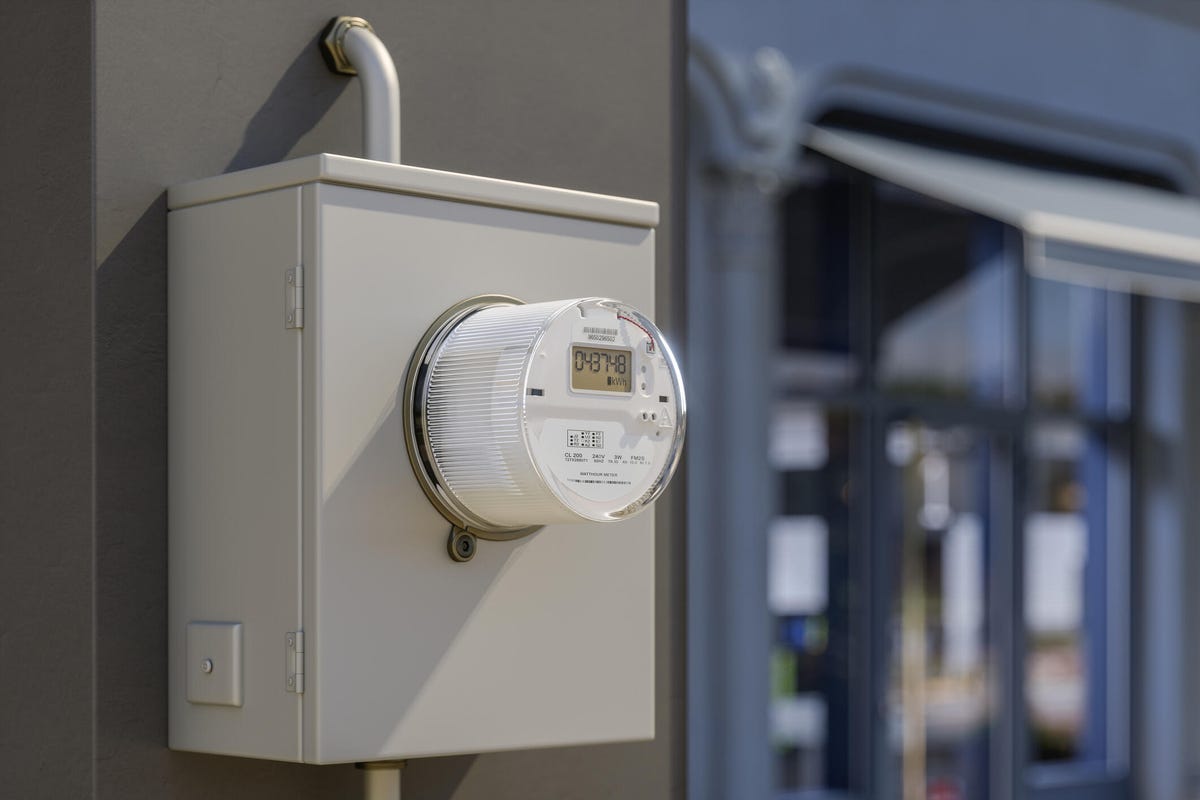If you’ve noticed your business electric bill rising over time it’s because of these two reasons: Your consumption has gone up, the cost of the energy has risen or both.
Commercial electric rates are priced differently than residential rates, and if you run a business it’s very likely you’ll be paying the commercial price. A commercial property, according to the US Energy Information Administration, is a retail store, restaurant, place of worship, hotel, school, office and more.
Over the last 20 years, commercial electricity rates have nearly doubled — rising from a national average of 7.5 cents to 13 cents per kWh. While there isn’t much you can do about rising electric rates, you can try to lower your usage.

We’ll help you find the best electricity rates in your area
“Heating and cooling is the biggest source of energy use in most homes. If you have a business, you probably have a lot more space to heat and cool, and much larger energy bills,” said Jon Reed, senior energy editor at CNET. In fact, the EIA reports that heating and cooling alone account for 32% of commercial energy consumption, the largest category of consumption for businesses. “Being strategic about how you use energy can have a major impact on your bottom line,” Reed said.
To start reducing your usage, lowering your energy costs and boosting your bottom line, start with these nine energy savings tips.

We’ll help you find the best electricity rates in your area

Even though business rates are lower than residential rates, your business electric bill will be higher. That’s because, more often than not, businesses will use more energy than a residence. Focusing on energy reduction is the key to saving on energy bills.
2. Install smart thermostats
You can use what you learned in an energy audit to reduce your consumption. Getting a smart thermostat, for example, can help you preprogram office temperatures to prevent heating and cooling your space when no one’s around.
A smart thermostat is an internet-connected device that makes scheduling the use of your HVAC system easier. Heating and cooling can be turned on before anyone arrives at the office and shut down automatically as the last person leaves. The US Department of Energy says you can reduce your yearly energy costs by 10% just by setting your smart thermostat to 68 degrees Fahrenheit for most winter days.
Many utilities offer incentive programs called virtual power plans that automatically adjust the temperature during times of peak demand and reward you with bill credits
You can find CNET’s latest picks for best smart thermostats here.
3. Check if your business is in a deregulated market
Currently, 18 states across the US along with the District of Columbia have deregulated or partially deregulated energy markets. Deregulation — otherwise known as energy choice — brings retail competition to the energy market. As a result, some experts say energy choice brings lower prices and a variety of plans and providers. But it also brings confusion. That’s why it’s important to research your business energy consumption profile and talk with multiple energy providers before making a choice.
If you choose wisely, you can save money. In energy choice markets, business owners can shop around for an energy supplier based on factors such as price per kilowatt, fixed or variable rate, the energy source (such as renewables), and length of contract. You can see if your business is located in an energy choice market by entering your ZIP code into a retail energy marketplace such as SaveOnEnergy (which is owned by Red Ventures, CNET’s parent company) or by contacting a reliable energy broker.
4. Upgrade to energy efficient equipment
Older equipment such as refrigerators, washing machines, dishwashers or other appliances can be energy wasters. Consider investing in an appliance upgrade — especially energy efficient appliances — to help offset your businesses energy costs.
“The oldest equipment is the most problematic,” Kraten said, adding that you might even earn a tax break for your investment.
Find out which energy upgrades qualify for a tax credit, rebate or other type of incentives here.
5. Check for ‘energy vampires’
Check for “energy vampires” — electronics that use energy even when not in active use. These devices include computers, TVs, speakers and kitchen appliances. Unplug these when not in use to save energy and lower your electric bill. For businesses that involve people using computers, ask employees to shut off devices overnight or during the weekend to save money.
There are also devices such as smart power plugs and smart power strips that do this for you. There are plenty of options available.
6. Switch to energy efficient lighting
Last year, the Department of Energy efficiency regulations effectively banned the sale of incandescent light bulbs, following through on a policy enacted by former President George W. Bush in 2007. While you will no longer be able to find these bulbs at stores, it’s likely many are still in use across the country. If your business uses these old bulbs, consider switching to LEDs, which according to one estimate can net savings between $50 to more than $150 per bulb over its lifetime.
See more energy efficient lighting options with CNET’s best LED bulbs.
7. Go solar
Solar panels collect the sun rays and convert it into electricity. With enough solar panels, your business can offset its electricity bill partially or completely. Not only do solar panels bring energy savings, the Inflation Reduction Act brings business owners increased incentives and tax credits. Solar panels are especially useful for companies that rely on charging electric vehicles.
CNET offers useful guides to choosing the best solar installer and best solar equipment and how to calculate your solar payback period.
<div id="6a727a36-5490-45f5-a403-3489e28772bb" data-cy="shortcodeListicle" data-id="listicle-6a727a36-5490-45f5-a403-3489e28772bb" data-location="LIST" data-position="6" edition="us" superlative="CNET's best overall solar installer" imagegroup="{"alt":"Solar installers put panels on a roof.","caption":"
Palmetto operates in over half of U.S. states.
","credits":"Palmetto","imageData":{"id":"52524d5c-694f-402c-8f6b-5db259ff5450","title":"palmetto-promo","filename":"palmetto-promo.jpg","path":"https://www.cnet.com/a/img/hub/2022/07/01/52524d5c-694f-402c-8f6b-5db259ff5450/palmetto-promo.jpg","caption":"
Palmetto operates in over half of U.S. states.
","size":3727896,"width":2352,"height":1568,"dateCreated":{"date":"2022-07-01 15:29:29","timezone":"UTC","timezone_type":3},"dateUpdated":{"date":"2022-07-01 15:30:13","timezone":"UTC","timezone_type":3},"needsModeration":false,"mimeType":"image/jpeg","deleted":false,"credits":"Palmetto","alt":"Solar installers put panels on a roof.","restricted":false,"startDate":null,"endDate":null,"preferred":false,"watermark":false,"doNotCrop":false,"doNotResize":false,"primaryCollection":null,"vanityUrl":null,"notes":null,"crop":null,"cropGravity":0,"preservedRegion":null,"isNew":false,"keywords":[],"primeColor":null,"hasWarning":false,"typeName":"content_image"},"uuid":"52524d5c-694f-402c-8f6b-5db259ff5450","imageAltText":"Solar installers put panels on a roof.","imageCaption":"
Palmetto operates in over half of U.S. states.
","imageCredit":"Palmetto","imageDoNotCrop":false,"imageDoNotResize":false,"imageWatermark":false,"imageFilename":"palmetto-promo.jpg","imageDateCreated":"2022/07/01","imageWidth":2352,"imageHeight":1568,"imageParallax":"","imageCrop":"","imageEnlarge":false}” overridecaption=”
Palmetto operates in over half of U.S. states.
” overridecredit=”Palmetto” usepricing=”true” data-key=”cnetlisticle__6a727a36-5490-45f5-a403-3489e28772bb” position=”NaN” contenttype=”Explainer” pagelayout=”Default – Article Page w/ original publish date” class=”c-shortcodeListicle g-border-thin-light-top g-inner-spacing-bottom-medium g-inner-spacing-left-large g-inner-spacing-right-large g-inner-spacing-bottom-xlarge c-shortcodeListicle-notInfoCard g-outer-spacing-bottom-large g-border-thin-light-bottom g-border-thin-light-right g-border-thin-light-left”>
8. Add a backup battery
If your utility charges time-of-use rates during peak demand hours, that means you’ll likely see spikes in electric rates during those times. Adding backup batteries can help you overcome those energy price spikes. The idea is, when rates spike, you tap into that stored energy.
Batteries can also power your business during a blackout and can be used to store excess solar power. Paired with a smart electric panel or hybrid solar system, you can control how and when your battery’s stored energy is used. Your business’s battery system may be eligible for a virtual power plant program, which can offer you savings.
Check out CNET’s list of best batteries and our newest winner.
9. Commercial heat pumps
Adding a heat pump can help you control your business’s heating and cooling costs tremendously. The DOE recently announced an accelerator program designed to help boost the technology and bring more efficient models to market.
A heat pump saves money by providing both heating and cooling together in one HVAC system. In simplest terms, a heat pump transfers heat inside or moves heat out. They use less energy and are more efficient than electric furnaces or older air conditioner models.
Why are commercial energy prices often less expensive than residential rates?
